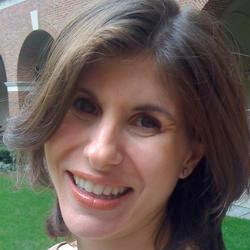Moses on the Nile

ספר האגדה–לדתו וגידולו משה, טז’
ותתצב אחותו מרחוק
למה עמדה מרים מרחוק? אמר רב לפי שהיתה מרים מתנבאת ואומרת: עתידה אימי שתלד בן שמושיע את ישראל מיד מצרים. וכיון שנולד משה נתמלא כל הבית כולו אור. עמד אביה ונשקה על ראשה. אמר לה: ביתי נתקיימה נבואתך! וכיון שהתילוהו ליאור, עמד אביה וטפח לה על ראשה: ביתי, היכן נבואתך? וזה שנאמר “ותתצב אחותו מרחוק, לידע מה יעשה לו, לידע מה יהא בסוף נבואתה.
Sefer Ha-Aggadah—the Birth and Childhood of Moses, 16
“And his sister stood afar off” (Exod. 2:4) What is meant by the statement that Miriam stood afar off? Rav explained that Miriam had prophesied: “My mother is destined to give birth to a son who will save Israel from Egypt.” And so when Moses was born and the house, all of it, was flooded with radiant light, Miriam’s father stood up and kissed her on the head, saying, “My daughter, your prophecy is fulfilled!” But after Moses was put into the river, her father tapped her on the head and whispered sadly, “My daughter, what is to become of your prophecy?” Hence the verse is to be read, “And his sister pondered over what would be done to him afar off”—pondered over the ultimate outcome of her prophecy in a time far off.
Hayim Nahman Bialik and Yehoshua Hana Ravnitsky’s The Book of Legends/Sefer Ha-Aggadah: Legends from the Talmud and Midrash is a masterpiece not only for its breadth and thematic arrangement of midrashim, but also for the editorial hand that weaves stories from various sources into vibrant legends of their own. Here we are given a midrash imagining not only Miriam’s role as a young prophet, but also the emotional turmoil she and her father, Amram, endured as Moses is born and then sent off in his basket down the Nile.
How familiar are their emotions and the way that those emotions quickly turn from joy—a joy that seems able to literally fill one’s home with light—to a sadness that causes us to speak in whispers of our despair. How tender, too, the relationship painted between Miriam and Amram—a relationship in which he marvels at his daughter’s gift of prophecy and shares with her his own rich inner life. How human, the image of the daughter eager to please her father and save her brother, hoping almost beyond hope in the truth of her prophecy as she wanders over to stand at a distance from the scene unfolding and ponder what will be.
I write this week from JTS’s Rabbinic Training Institute (RTI), a conference designed to give Conservative rabbis a chance to stand afar in order to gain perspective on the work they do and to take stock of the joys, despairs, and questions they deal with daily. And so it is this image—of Miriam standing at the riverbank wondering what will happen to this brother she loves so much—that resonates most. In our own journeys we are all a bit like Miriam, not knowing how things will end but living through the ups and downs of life and sharing those moments with those closest to us. The midrash invites us all to do what RTI invites the rabbinic leaders of our communities to do: to every so often take a step back to watch the scenes of our lives unfolding and ponder what is happening and what is yet to come.



